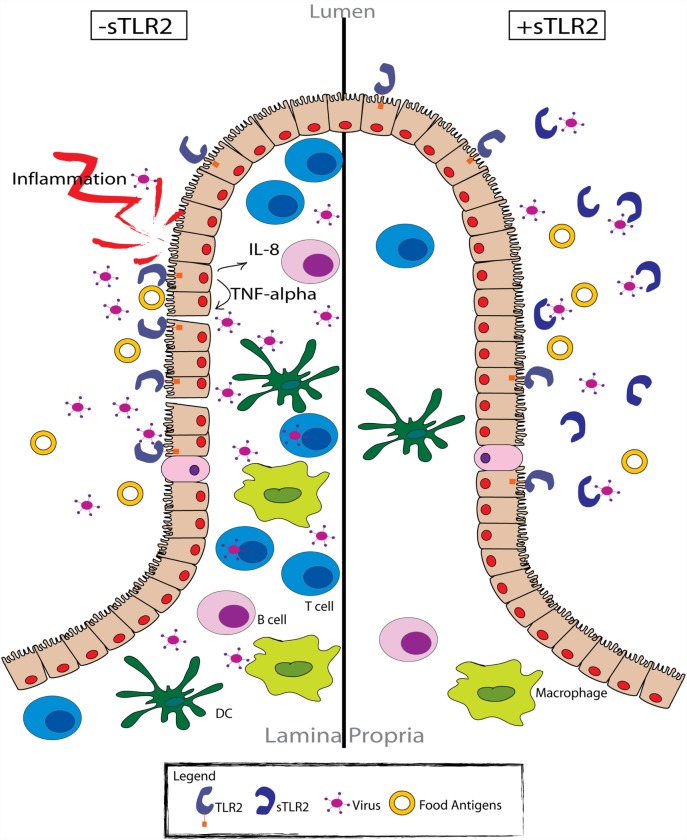Figure 2.
sTLR2 functions as an immunoregulatory factor in the intestinal mucosa. Pathogen exposure (e.g., HIV) results in TLR activation of the intestinal epithelial cells (left). Cellular activation promotes the production of various pro-inflammatory cytokines and chemokines, as well as the subsequent recruitment of effector cells to the site of exposure. However, many of these cells (i.e., CD4+ T cells and monocyte/macrophages) are viral target cells, providing an abundant number of host cells for the virus to infect. Therefore, activation of the immune response serves to propagate the viral infection, as well as the local inflammatory response. Conversely, in the presence of sTLR2 (right), viral proteins that typically activate various TLRs expressed by intestinal epithelial cells are sequestered, preventing the activation of the immune response. In this respect, sTLR2 functions as a regulatory molecule, limiting the available target cells for viral infection and the local inflammatory response.

